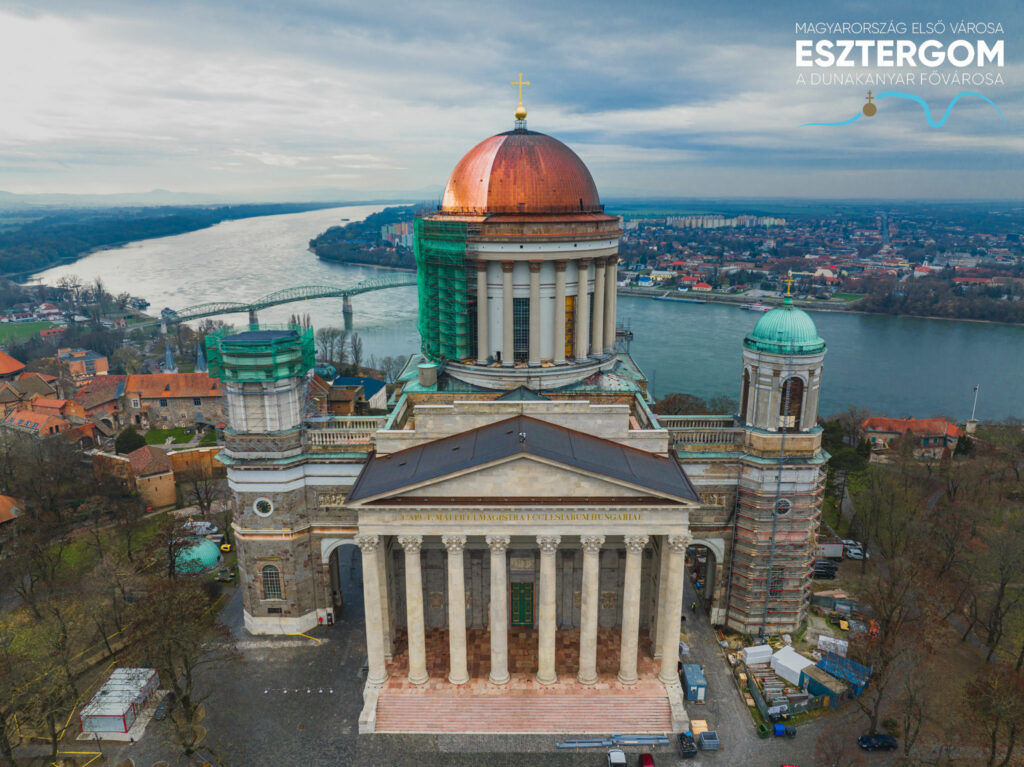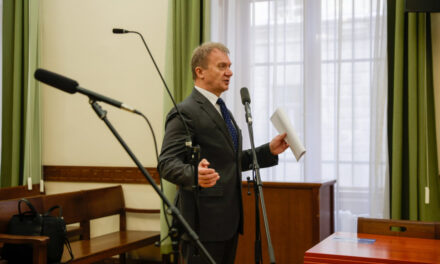The work continues, at the end of which the Esztergom basilica will regain its original splendor. A complete renovation has not taken place in the basilica since its consecration, and "thanks" to this, a part of the building has become almost life-threatening.
A church has been standing on the castle hill in Esztergom since the 10th century. The first was built by Prince Géza in honor of Saint István, the first martyr. St. István founded the Esztergom archdiocese in 1001, and by 1010, the St. Adalbert Cathedral stood on the site of today's basilica. The church partially burned down in the 12th century.
The cathedral of Esztergom was destroyed after the Turkish occupation in 1543. Half a century later, during the battle to retake the castle, the gunpowder stored in it exploded, and only the Bakócz chapel – a masterpiece of Hungarian Renaissance architecture – remained intact.
A new church was planned to replace the ruins in the 18th century, but the visions of Archbishop Ferenc Barkóczy did not come true. In 1820, Duke-Primate Sándor Rudnay asked the chief court architect Ludwig von Remy to design it, but in the end he entrusted the work to Pál Kühnel, who worked alongside Remy. Pál Kühnel dreamed of a huge complex of buildings on Castle Hill, with palace wings connected to the domed building of the basilica, an archbishop's palace, a seminary and canon houses. From the grandiose plan, only a part of the cathedral and the canon houses were realized.
The foundation stone of today's cathedral was laid on April 23, 1822, on the feast of St. Adalbert. János Packh, Pál Kühnel's nephew, who led the construction, modified the floor plan and also changed the facade. The Bakócz chapel was dismantled into 1,600 pieces, its orientation changed, and it was preserved as a side chapel of the basilica. After the death of Archbishop Sándor Rudnay in 1831, construction continued only in 1839, after the appointment of József Kopácsy. János Packh was murdered in the same year, and the new archbishop asked József Hild, who made the plans for the Eger Cathedral, to do the work.
Hild József built the dome in a way that was considered a novelty in Hungary at the time, with an iron structure, and he raised and surrounded the dome drum with columns, which enhanced the monumental effect of the building. When József Kopácsy died in 1847, the building was already vaulted and the cross was on the dome.
The cathedral was consecrated by the new prince-primate, János Scitovszky, on August 31, 1856, although the colonnaded vestibule of the main facade was still unfinished and the southern bell tower was also missing. The construction was completed under the direction of József Lippert, the cornerstone was laid on November 1, 1869, already during the archbishopric of János Simor; and the building acquired its present form only in 1886.

The conservation of the Esztergom basilica became urgent in 2016. Smaller or larger parts of the stucco decoration of the dome began to fall, the plaster falling from a height of 60-70 meters was dangerous, so a net was drawn under the entire dome. In addition, the north aisle was scaffolded, where radar and moisture tests were carried out by a number of experts to assess the condition of the wall and stucco. High-resolution images of the dome show that the wall surface is in "critical condition," with "knots of plaster hanging on pieces of wire that could fall at any time."
The HUF 1.6 billion received from the government in 2016 proved to be insufficient to preserve the structure, so at the request of Cardinal Péter Erdő, Primate, Archbishop of Esztergom-Budapest, a budget and schedule plan for the complete exterior and interior renovation was prepared. The more than HUF 11 billion required for this was awarded by the government in December 2018.
Balázs Orbán, the prime minister's political director, wrote on his social media page about the renovation of the Esztergom basilica:
"The Esztergom basilica will be renewed!
Our historical experience has taught us that there is a close connection between architecture, ideology and national identity.
Therefore, since 2010, the Hungarian government has placed special emphasis on the restoration of classical architectural monuments, which is an important element of strengthening Hungarian national identity. As an important step in this work, the government announced in 2019 the reconstruction of the classicist-style Cathedral of Our Lady and Saint Adalbert, which, with its 100-meter height, is not only one of the most impressive symbols of Christian Hungary, but also one of Europe.
The Second World War destroyed a significant part of the historical buildings, so it did not spare the iconic Esztergom basilica either, which was hit by almost 100 grenades and bombs during the fighting.
Although minor repairs have been carried out on the historically important building in recent decades, this is the first time that a full-scale external and internal renovation will take place. The renovation works have reached a very spectacular stage: the dome and the bell are currently being reconstructed.
For this, the roof structure was lowered, so that the copper supporting plates, which are also renewed, can shine in their full glory. Once the works are completed, the basilica can regain its former splendor and shine again in its former glory, worthy of its great past."

Source and images: Facebook












